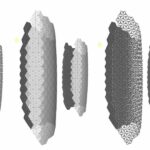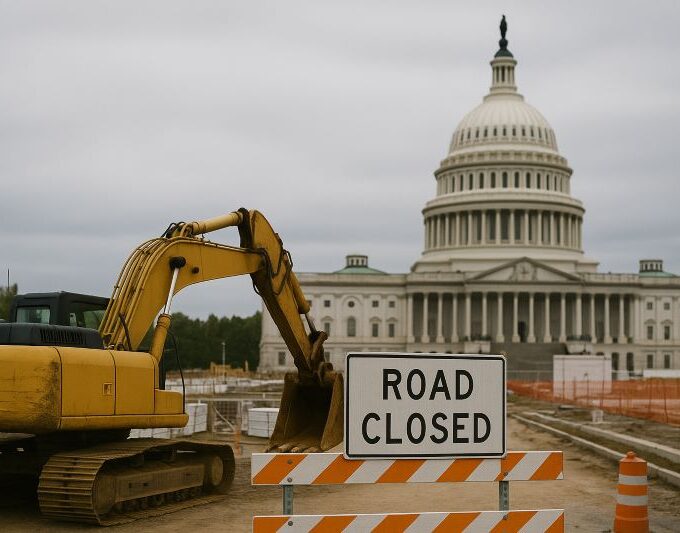Recently, two events involving the U.S. and Africa have drawn attention. On July 9, U.S. President Trump hosted a “mini Africa summit” at the White House, meeting with the presidents of five African nations—Gabon, Guinea-Bissau, Liberia, Mauritania, and Senegal. In his opening remarks, Trump said that U.S. policy toward Africa is “shifting from aid to trade.” Two weeks earlier, the 17th U.S.-Africa Business Summit was held in Angola, a country in southwestern Africa, bringing together more than 1,500 representatives from both the U.S. and Africa.
Some analysts see these moves as a sign that the U.S. is trying to build a more “balanced and mutually beneficial” relationship with Africa, rather than one based solely on aid. However, this shift faces serious obstacles. U.S. visa bans, tariff threats, and a condescending attitude have raised skepticism across the continent—prompting the question: is this just another “modern colonial performance,” old wine in a new bottle?
The “Mineral Gamble” Behind “Peace and Equality”
“Trump believed that each country represented at the luncheon had voluntarily offered opportunities for economic investment and cooperation,” a source familiar with the July 9 “mini Africa summit” told The New York Times. According to the source, the U.S. government invited African nations to the summit with the aim of striking deals to help the U.S. secure more critical minerals—and to “counter China’s growing influence on the African continent.”
On June 27, before the summit, the Trump administration brokered a peace agreement between the Democratic Republic of the Congo (DRC) and Rwanda. However, Turkey’s Anadolu Agency described it not as a genuine “peace agreement,” but rather as a “mineral gamble.” Citing experts, the report argued that without addressing underlying socio-economic and political issues, no mineral deal can bring lasting peace.
From Ukraine to Africa, the U.S. goal of securing mineral resources has remained unchanged. Xin Qiang, deputy director of the Center for American Studies at Fudan University, noted that like the Biden administration, the Trump administration is also highly focused on critical mineral supply chains. According to Xin, the U.S. has at least two strategic motives: First, to strengthen its influence and control over key mineral supply chains in order to maintain its industrial and economic power, as minerals are essential raw materials and the “lifeblood” of emerging industries. Second, to prevent China’s influence from further expanding. The U.S. suffered setbacks in rare earths during the tariff war with China, so it is now placing greater emphasis on controlling rare earths and other critical minerals.
The five African nations invited to the “mini Africa summit” are all coastal countries in West Africa, rich in natural resources. In addition to gold and diamonds, they also possess critical minerals such as lithium, manganese, cobalt, and rare earths—essential for manufacturing lithium-ion batteries and electronic components. For example, according to Reuters, Gabon has the world’s largest manganese deposits and is one of the top global exporters of manganese ore. In January, Liberia announced the discovery of several key mineral resources within its borders—including uranium, lithium, cobalt, and manganese—expected to attract $3 billion in foreign investment. Senegal’s mining sector has grown rapidly in recent years, with exports currently centered on gold and zircon, though the country also holds reserves of copper, nickel, and chromium.
Around the time of the summit, some U.S. companies had already begun signing deals with these countries. On July 4, Liberia’s Daily Observer reported that the Liberian government had signed an agreement with U.S. mining firm Ivanhoe Liberia, allowing the company to transport high-grade Guinean iron ore via Liberia’s railways and ports for the next 25 years. During the summit, the U.S. International Development Finance Corporation also signed a deal with Canada’s Millennial Potash Corp to provide $500 million in financing for the development of the Banyo potash project in Gabon.
Song Wei, a professor of international relations at Beijing Foreign Studies University who closely follows African affairs, said Trump is pushing for a so-called “equal-footing” relationship—shifting from unilateral U.S. aid to a model where African countries trade their minerals for the investments they need. This reflects a “transactional diplomacy” approach. According to Song, the U.S. has never truly viewed Africa as a development partner. Developed countries have a moral responsibility to support less developed ones, but the U.S. supports Africa only out of its own interests—mainly access to minerals and spreading its values—with the ultimate goal of boosting its own position in global power competition.
Speaking on how the Trump administration might accelerate its efforts in Africa, Xin Qiang offered three key points of analysis: First, the U.S. government is likely to expand trade with African countries rich in mineral resources, offering favorable policies and military protection while boosting its influence to secure mining rights. Second, Washington may pressure African governments to impose tighter restrictions on Chinese investment in the mining sector, aiming to curb China’s presence. Third, the U.S. is expected to further amplify narratives like the “debt trap” and “economic exploitation” theories to discredit China—then work with allies to undermine China’s influence on the continent.
“Trade, Not Aid” Isn’t a New Idea
This isn’t the first time the U.S. has floated the idea of shifting from aid to trade in its Africa policy. In May, during a visit to West Africa, Judd Devermont, a senior official from the U.S. State Department’s Bureau of African Affairs, unveiled a new “commercial diplomacy” strategy centered around the slogan “Trade, not Aid”—a phrase U.S. media described as a cornerstone of the Trump administration’s Africa approach.
Devermont laid out six key action items. These included making “commercial diplomacy” a core duty for U.S. ambassadors to African nations; supporting market reforms coordinated with African governments—countries that implement such reforms will become key U.S. investment targets; and advancing infrastructure projects to drive economic growth and attract private capital.
“‘Trade, not Aid’ is not a new concept,” reported international development news site Devex. According to Foreign Policy, the phrase originated after World War II, originally calling for an end to postwar aid to Europe. At the first UN Conference on Trade and Development in 1964, Argentine economist Raúl Prebisch called for a more equitable global economic order, arguing that developing countries faced structural disadvantages and needed better access to wealthy markets. Over the following decades, the slogan gradually found its way into U.S. policymaking.
The U.S. has been providing aid to Africa for over 70 years. During the Cold War, U.S. foreign policy focused on countering the influence of the socialist bloc—and U.S.-Africa relations were structured around that goal. In 1949, then-President Harry Truman launched the “Point Four Program,” marking the beginning of American aid to Africa. With the creation of the U.S. Agency for International Development (USAID) in 1961, the agency became a central force behind U.S. humanitarian aid and the promotion of American values across Africa.
After the Cold War, the U.S. model of foreign aid came under growing scrutiny. In 1993, then-President Bill Clinton declared that “trade agreements are more important than missiles.” The African Growth and Opportunity Act (AGOA), passed in 2000, reflected the “Trade, not Aid” approach. It granted eligible African countries duty-free access to the U.S. market—but in exchange, these countries had to comply with evolving political and economic reform conditions.
Since then, successive U.S. administrations have adopted a dual-track approach combining “aid + trade.” In 2001, President George W. Bush stated, “We must ensure free and fair trade with the African continent.” At the same time, he launched major aid initiatives, such as the 2003 President’s Emergency Plan for AIDS Relief (PEPFAR). In 2004, the Millennium Challenge Corporation was established, tying aid to political standards under the banner of “freedom and democracy.” In 2013, the Obama administration launched the Power Africa initiative.
When Trump took office in 2017, he initially sought to slash aid to Africa and showed open disdain toward some African nations, drawing criticism. Still, as part of efforts to counter China and Russia’s growing influence in Africa, Trump launched the New Africa Strategy and the Prosper Africa initiative, and established the U.S. International Development Finance Corporation (DFC). After President Biden took over, the DFC invested $553 million into the Lobito Corridor project—an 800-mile railway linking the DRC, Zambia, and Angola to Atlantic ports, seen as a direct competitor to China’s infrastructure investments in Africa.
Trump’s return to the presidency brought new shifts. According to The New York Times, “Trump has broken many of the long-standing norms of U.S. engagement in Africa: cutting USAID programs, imposing tariffs, threatening free trade arrangements with dozens of African nations, and loosening anti-corruption standards for U.S. companies doing business abroad.” On July 15, Trump even stated that he plans to impose tariffs of over 10% on “small countries,” including those in Africa.
Jendayi Frazer, former Assistant Secretary of State for African Affairs under the Bush administration, recently questioned the current U.S. approach: “You cut aid, dismantle programs, and engage in tariff bullying. Then you turn around and say, ‘Welcome American businesses—and give them favorable treatment.’ Really?”
Is America’s “Commercial Diplomacy” Just a Symbolic Commitment?
At the 17th U.S.-Africa Business Summit held in late June, African Union Commission Chair Moussa Faki Mahamat criticized a series of unfair U.S. policies toward Africa—issues the U.S. has yet to clearly address. Speaking on the difficulty many African citizens face obtaining U.S. visas and the widespread threat of U.S. tariffs, he remarked: “How are we supposed to develop trade between Africa and the U.S.?… We do not accept travel bans, nor tariffs that have nothing to do with WTO rules!”
Nigerian Foreign Minister Yusuf Tuggar echoed this concern, stating: “West Africa wants to reach an agreement with the United States, but visa bans have become a real obstacle.” According to The New York Times, even among the five countries that participated in the “mini Africa summit,” only Guinea-Bissau had, so far, avoided being affected by U.S. visa or travel restrictions.
From African leaders’ statements, there appears to be a mix of cautious optimism and skepticism. On one hand, they welcomed U.S. proposals; on the other, they were clearly waiting for more tangible actions. Liberian President Joseph Boakai said after the meeting, “We are optimistic about the summit’s outcome and reaffirm Liberia’s commitment to regional stability, democratic governance, and inclusive economic growth.” Gabonese President Ali Bongo Ondimba stressed his hope for greater U.S. involvement in green transition, energy investment, and mineral development. He told Trump: “We are not a poor country. In terms of raw materials, we are rich. But we need partners to help us develop these resources. You are welcome to invest. Otherwise, other countries may take your place.”
Some countries excluded from the summit voiced sharp criticism. Algerian writer Maher Dahshan wrote in an Al Jazeera article that the “mini Africa summit” resembled a “modern colonial theater.” He noted, “Trump claimed that five African leaders represented the entire continent—this alone shows America’s narrow understanding of Africa.” African outlet Jeune Afrique reported that the U.S. commercial diplomacy strategy appears “highly selective,” sparking discontent within the African Union. Other nations expressed concern that the U.S. approach could create divisions across the continent.
Former Liberian Minister of Public Works Gyude Moore published an op-ed arguing that America’s “commercial diplomacy” strategy faces serious challenges both in concept and execution. According to Moore, the strategy is “clearly skewed toward serving U.S. interests rather than promoting mutual benefit or supporting African businesses.” He pointed out that the strategy makes no mention of the soon-to-expire African Growth and Opportunity Act (AGOA), while frequently referencing “exports to Africa”—signaling a largely one-way trade agenda. Moreover, with U.S. aid programs halted under Trump, and most American construction companies absent from the African continent, it’s unclear who would actually carry out the promised infrastructure projects. “Are these just symbolic commitments?” Moore asked.
In his article, Moore also noted that many African leaders have observed parallels between the U.S. proposals and China’s existing trade and investment model in Africa. He argued that the U.S. is attempting to emulate China’s approach to Africa, but lacks the key factors behind China’s success—namely, a full state-backed industrial ecosystem of construction firms, railway operators, banks, and insurance companies. So far, he wrote, the U.S. has failed to present a concrete roadmap to African nations. It has not promised broader access to U.S. markets, introduced new financing mechanisms, or addressed how Africa could move up the value chain in the critical minerals sector—such as through local processing or industrial upgrades. South African political analyst Justice Malala echoed these doubts in an article for Bloomberg, writing: “If Trump plunders like the colonialists did—loads up the riches on his plane and leaves—he will not be a friend of the African continent.”













Leave a comment